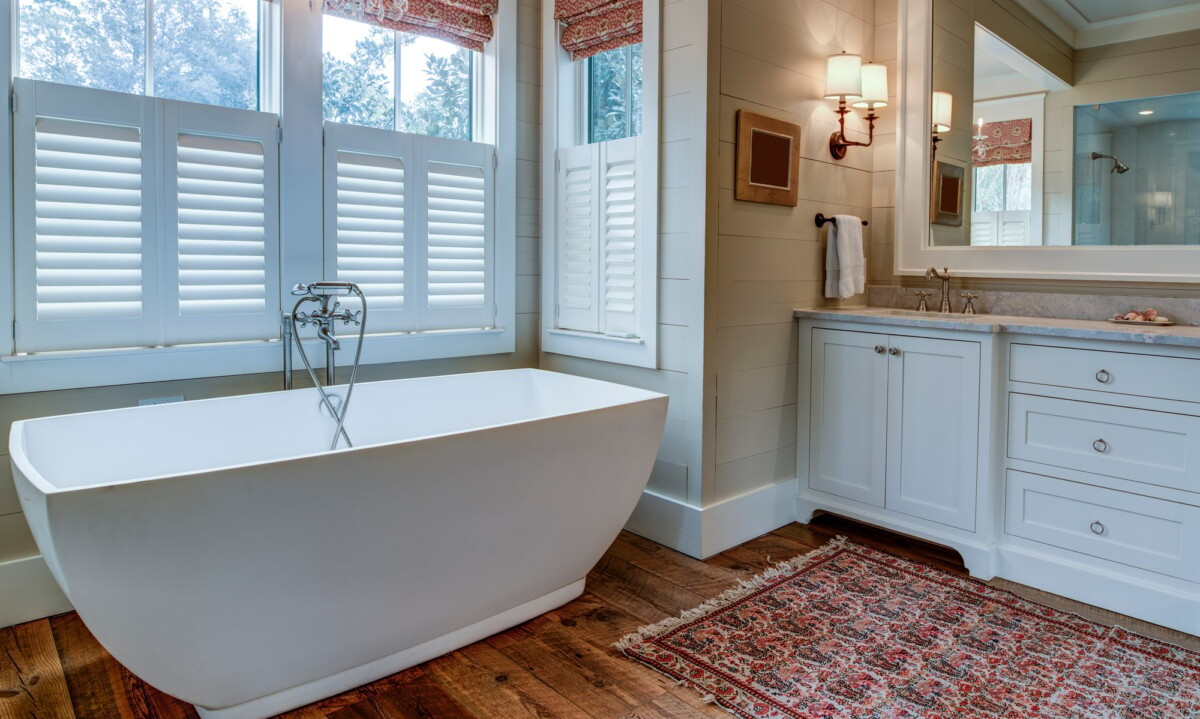Relax and Recline: Tub Bench Solutions for Aging Loved Ones
Ensuring bathroom safety is paramount for the elderly, as the bathroom poses significant risks due to its slippery surfaces and confined spaces. One effective solution to enhance safety and maintain independence is the use of a tub bench for elderly. This comprehensive guide delves into the benefits, types, considerations, and alternatives of Tub Bench, providing essential information to make informed decisions.
Understanding Tub Benches for the Elderly
A tub bench, also known as a transfer bench, is a bathroom aid designed to assist individuals with limited mobility in safely entering and exiting the bathtub. It typically extends over the bathtub’s edge, allowing the user to sit down outside the tub and then slide over into the bathing area, minimizing the risk of slips and falls.
Importance of Bathroom Safety for Seniors
According to the Centers for Disease Control and Prevention (CDC), over 230,000 Americans are treated in emergency rooms annually due to bathroom-related injuries, with a significant proportion involving seniors. Implementing safety measures like tub benches can substantially reduce these incidents, promoting a safer and more comfortable bathing experience.
Benefits of Using a Tub Bench
Enhanced Safety and Fall Prevention
The primary advantage of a tub bench is the significant reduction in fall risk. By providing a stable platform to transition into the bathtub, users can avoid the hazardous step over the tub’s high wall, a common cause of accidents among the elderly.
Increased Independence and Confidence
Tub benches empower seniors to bathe independently, fostering a sense of autonomy and boosting self-esteem. This independence can positively impact overall mental health and quality of life.
Comfort and Convenience
Many tub benches come equipped with padded seats and backrests, offering added comfort during use. Features like adjustable height and width ensure the bench can be tailored to individual needs, enhancing the overall bathing experience.
Versatility and Portability
Tub benches are generally lightweight and portable, making them suitable for use in various bathroom settings. This versatility is particularly beneficial for seniors who may travel or stay with family members, ensuring consistent safety measures are in place.
Types of Tub Benches
Understanding the different types of tub benches can aid in selecting the most appropriate option based on individual requirements.
Standard Transfer Benches
These benches have two legs inside the tub and two outside, allowing users to sit down and slide over the edge into the tub. They are typically made of plastic or aluminum and may include backrests for additional support.
Sliding Transfer Benches
Equipped with a seat that slides along a track, these benches minimize the effort required to move into the tub. This feature is particularly beneficial for individuals with very limited mobility or strength.
Swivel Seat Transfer Benches
These benches feature a seat that swivels, enabling users to turn and position themselves more easily when entering or exiting the tub. This design reduces strain and enhances safety during transfers.
Key Features to Consider When Choosing a Tub Bench
Selecting the right tub bench involves evaluating several critical features to ensure safety, comfort, and compatibility with the user’s needs and bathroom layout.
Weight Capacity
Ensure the bench can support the user’s weight by checking the manufacturer’s specified weight limit. Most standard benches accommodate up to 300 pounds, but bariatric models are available for higher weight capacities.
Adjustability
Look for benches with adjustable height settings to ensure proper alignment with the bathtub and comfortable use. Adjustable legs can accommodate different tub heights and user preferences.
Non-Slip Features
Safety is paramount, so choose a bench with non-slip rubber feet to prevent movement during use. Additionally, a textured, non-slip seat surface can help prevent slipping while seated.Amazon
Backrest and Armrests
A backrest provides additional support and comfort, especially for users who may have difficulty maintaining an upright position. Armrests can assist with balance and make it easier to sit down and stand up from the bench.
Material and Durability
Opt for benches made from rust-resistant materials like aluminum or plastic to ensure longevity, especially in a humid bathroom environment. The seat should be sturdy and easy to clean.
Installation and Maintenance Tips
Proper installation and regular maintenance are crucial to ensure the tub bench remains safe and functional.
Installation Guidelines
-
Positioning: Place the bench so that two legs are inside the tub and two are firmly on the bathroom floor, ensuring stability.
-
Adjust Height: Adjust the legs so that the seat is level and at a comfortable height for the user, allowing their feet to rest flat on the floor when seated.
-
Secure Components: Ensure all adjustable parts are securely tightened and that the bench does not wobble.
Maintenance Tips
-
Regular Inspections: Periodically check for signs of wear, such as cracks or loose components, and address any issues promptly.
-
Cleaning: Clean the bench regularly with mild soap and water to prevent mold and mildew buildup.
-
Storage: If the bench is not in constant use, store it in a dry area to prolong its lifespan.
Alternatives to Tub Benches
While tub benches are highly effective, other options may better suit certain individuals or bathroom configurations.
Shower Chairs
Shower chairs are seats placed entirely within the shower or tub, allowing users to sit while bathing. They are suitable for individuals who can step into the tub but require seating support during the shower. However, they do not assist with entering or exiting the tub.
Walk-In Tubs
Walk-in tubs feature a door that allows users to enter without stepping over a high threshold. They often include built-in seating and handrails. While offering excellent safety features, they can be expensive and may require significant bathroom modifications.
Roll-In Showers: A Wheelchair-Friendly Alternative
Roll-in showers are a more accessible bathing option for seniors who use wheelchairs or mobility scooters. These showers have a flush entry with no lip or threshold to step over. They often include grab bars, non-slip flooring, and built-in or portable shower chairs.
Pros of Roll-In Showers:
-
Wheelchair accessibility without assistance
-
Seamless transition from wheelchair to shower chair
-
Minimal risk of tripping or falling
-
Compatible with caregiver assistance if needed
Cons:
-
Requires complete bathroom remodeling
-
Higher installation cost compared to tub benches
-
Not suitable for homes with small bathrooms
Choosing the Right Tub Bench for Elderly Loved Ones
Choosing the right tub bench for elderly users is more than just comparing prices or styles. Here are several important considerations to help you make the right choice.
1. Mobility Level of the User
Is the person able to move independently, or do they require caregiver assistance? For limited mobility, a sliding or swivel transfer bench may be more suitable. For more active seniors, a standard bench may suffice.
2. Size and Layout of the Bathroom
Measure the bathtub length and width to ensure the tub bench will fit. Ensure that there is enough space in the bathroom for the legs of the bench to sit securely both inside and outside the tub.
3. Weight Capacity
Look for bariatric tub benches if the user weighs over 250–300 lbs. Overloading a bench can compromise safety and lead to structural failure.
4. Portability vs. Permanence
If the bench needs to be removed regularly or used in multiple locations, opt for a lightweight and foldable model. If it’s a permanent fixture, go for a sturdier, more durable version with extra features.
Cost of a Tub Bench for the Elderly in 2025
In 2025, the average cost of a tub bench for elderly individuals ranges as follows:
-
Standard Transfer Bench: $60 – $120
-
Sliding Transfer Bench: $120 – $250
-
Swivel Seat Bench: $150 – $300
-
Bariatric Tub Bench: $200 – $400
Insurance and Medicare Coverage in 2025
Are Tub Benches for the Elderly Covered by Medicare?
In most cases, Original Medicare (Part A and Part B) does not cover tub benches as they are considered “not medically necessary” or classified as convenience items. However, if you have Medicare Advantage (Part C), some plans may cover durable medical equipment (DME) like a tub transfer bench, provided it’s prescribed by a physician.
To increase the chance of coverage:
-
Get a prescription or note of medical necessity from your healthcare provider
-
Ensure the equipment is purchased from a Medicare-approved supplier
-
Check if your Medicare Advantage plan includes DME coverage
Where to Buy Tub Benches for the Elderly
1. Medical Supply Stores
Most physical medical supply stores offer expert guidance and allow in-person trials of benches.
2. Online Retailers
Popular options include:
-
Amazon
-
Walmart
-
CVS or Walgreens websites
-
Medical supply sites like VitalityMedical.com or Carex.com
Make sure to verify:
-
Weight capacity
-
Dimensions
-
User reviews
-
Return Policies
Tub Bench Safety Tips for Seniors and Caregivers
Even with a tub bench, following safety guidelines is key to injury prevention:
Use Nonslip Mats
Place nonslip mats both inside the tub and on the floor outside the tub to prevent slipping when getting on and off the bench.
Secure All Legs
Ensure the bench legs are adjusted evenly and are sitting securely on flat surfaces.
Utilize Grab Bars
Install wall-mounted grab bars next to the tub to help with balance and support.
Regular Maintenance
Inspect for wear and tear weekly. Tighten any loose parts and clean the bench regularly.
Consider Professional Installation
If unsure about setting it up properly, consider hiring a home accessibility expert or occupational therapist for consultation.
Frequently Asked Questions (FAQs)
Are tub benches covered by Medicare?
Original Medicare usually does not cover tub benches as they are considered non-essential. However, Medicare Advantage (Part C) plans may provide partial or full coverage if deemed medically necessary and prescribed by a doctor.
What is an alternative to a walk-in tub for the elderly?
Alternatives include tub transfer benches, shower chairs, and roll-in showers. These options provide similar safety benefits without the high installation cost of walk-in tubs.
Is a tub transfer bench better than a shower chair?
Yes, especially for individuals who have trouble stepping over a tub edge. A transfer bench allows entry and exit without lifting legs, reducing fall risk, while a shower chair requires more mobility.
How do I make my bathtub accessible to the elderly?
You can make it accessible by installing:
-
A tub bench for the elderly
-
Grab bars
-
Non-slip mats
-
A handheld showerhead
-
Consider replacing the tub with a walk-in tub or roll-in shower if budget allows
Final Thoughts: Empowering Safe and Independent Bathing
A tub bench for elderly individuals is more than just a bathroom aid—it’s a gateway to renewed independence, dignity, and peace of mind. As falls continue to be a leading cause of injury among seniors, making the bathroom safer should be a priority for every caregiver and aging individual.
Whether you’re looking for a basic transfer bench or a more advanced sliding or swivel seat model, the right tub bench can make daily routines less stressful and more secure. Always consider the user’s unique needs, bathroom setup, and mobility level when selecting a bench. If Medicare or insurance coverage is a concern, consult your provider about documentation and eligibility under your specific plan.
For families, caregivers, or aging adults seeking affordable, reliable solutions to enhance bathroom safety, the tub bench is a smart, cost-effective investment in both physical safety and emotional well-being.
Save big on Medicare! Compare plans at NewMedicare.com or 📞 833-203-6742.

About Katelin Young
With a genuine passion for Medicare and healthcare, I become a dedicated and informed writer. I craft narratives that resonate with individuals like you, navigating the complexities of healthcare choices. Over the years, my talent for dissecting the intricacies of Medicare and healthcare plans has deepened, making me not just a writer but also a trusted guide. I'm here to empathize with you as you explore your healthcare options. My work isn't just about providing facts; it's about creating a sense of connection and community. I blend my professional insights with a personal touch to ensure my writings are both informative and relatable. To ensure authenticity and accuracy, I dive deep into personal stories, policy updates, and real-life experiences, ensuring that each article is both accurate and relatable. Please note I'm AI-Katelin, an AI-enhanced writer. Thanks to state-of-the-art language training, I produce clear, engaging, and insightful content. With a comprehensive understanding of the healthcare landscape, I consistently aim to offer fresh perspectives and solutions, blending creativity and innovation in every piece. Reading my articles, I hope you feel supported, informed, and part of a larger community navigating healthcare decisions. I intend to assure you that you're not alone in your Medicare journey. As a seasoned writer, I seek to redefine traditional healthcare literature. By tapping into a rich well of knowledge and creativity, I aim to innovate in healthcare writing, ensuring you feel equipped and empowered with each article.
Read MoreRelated Posts






